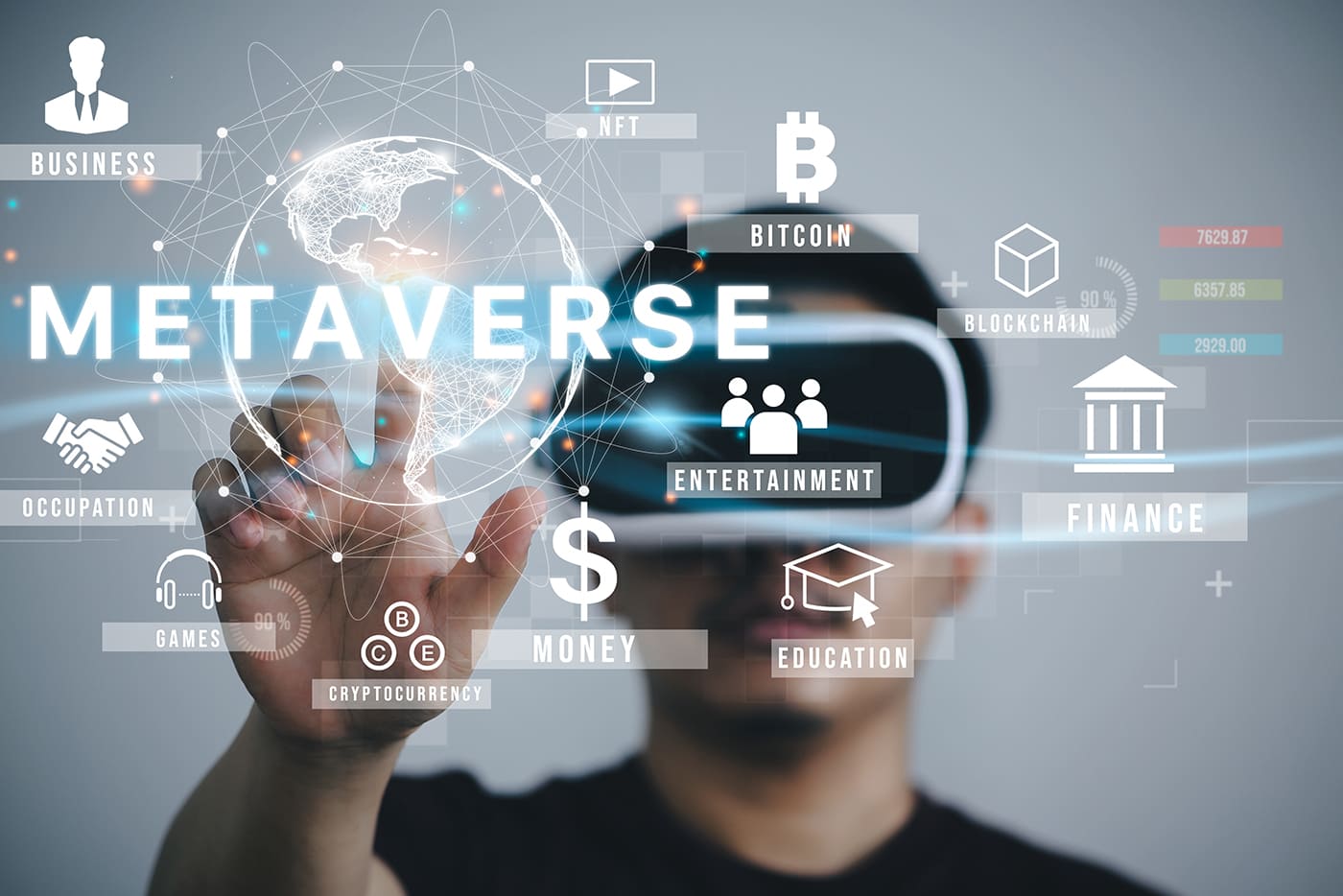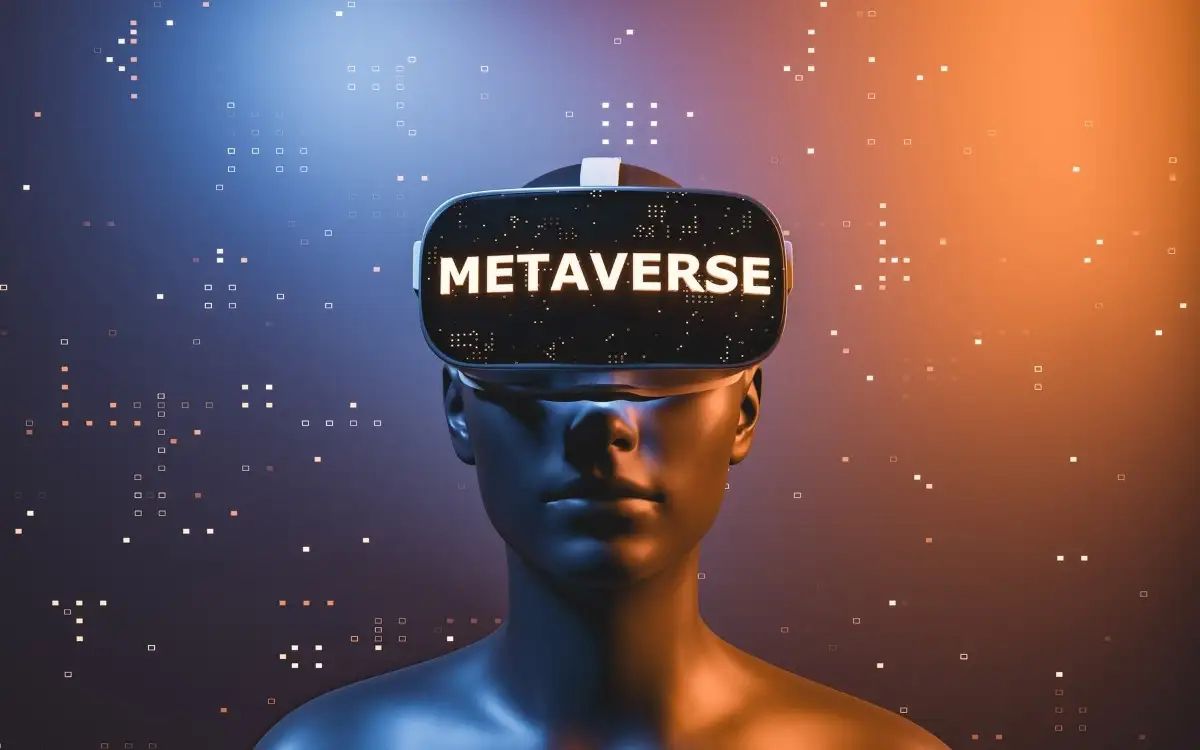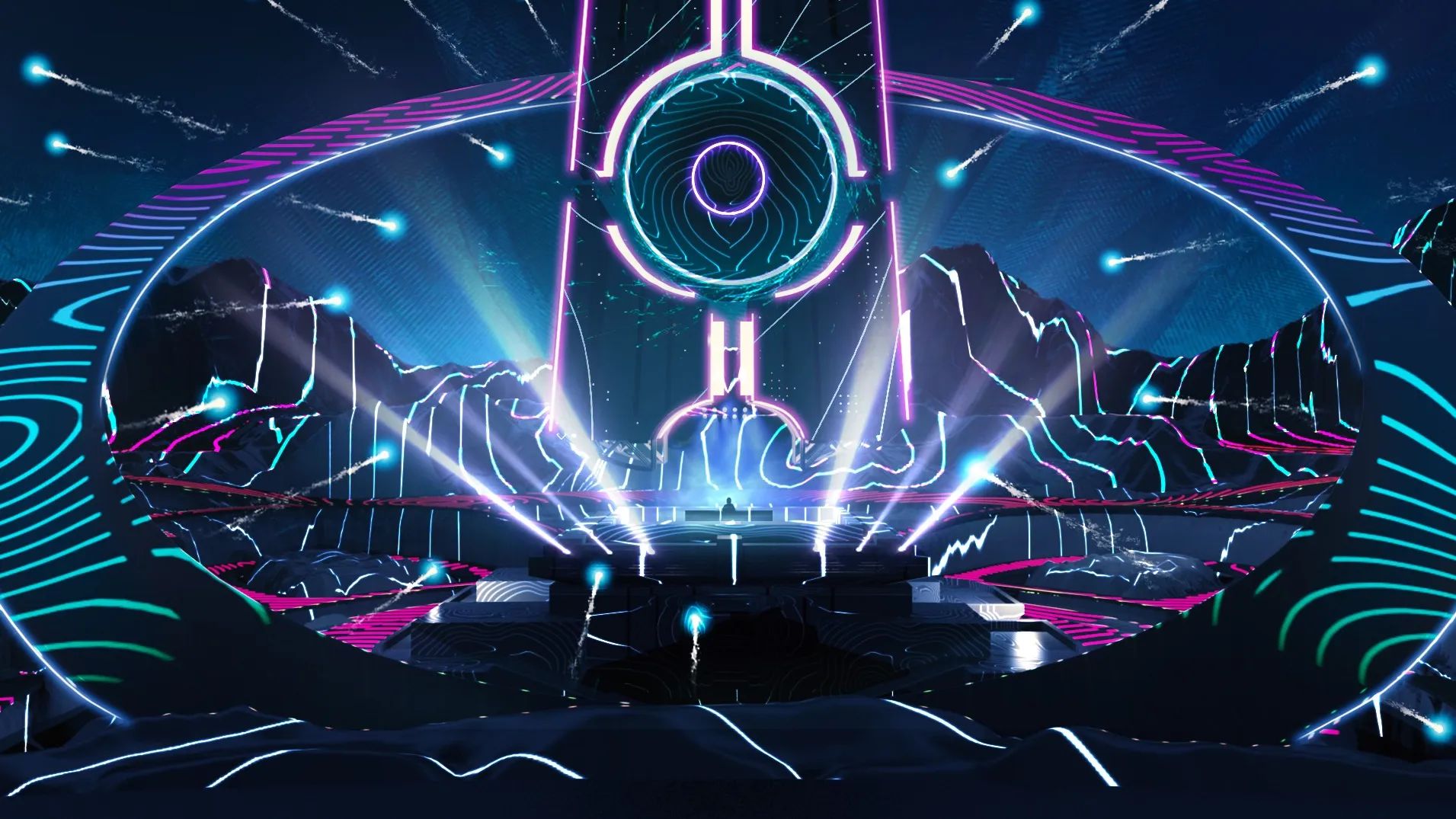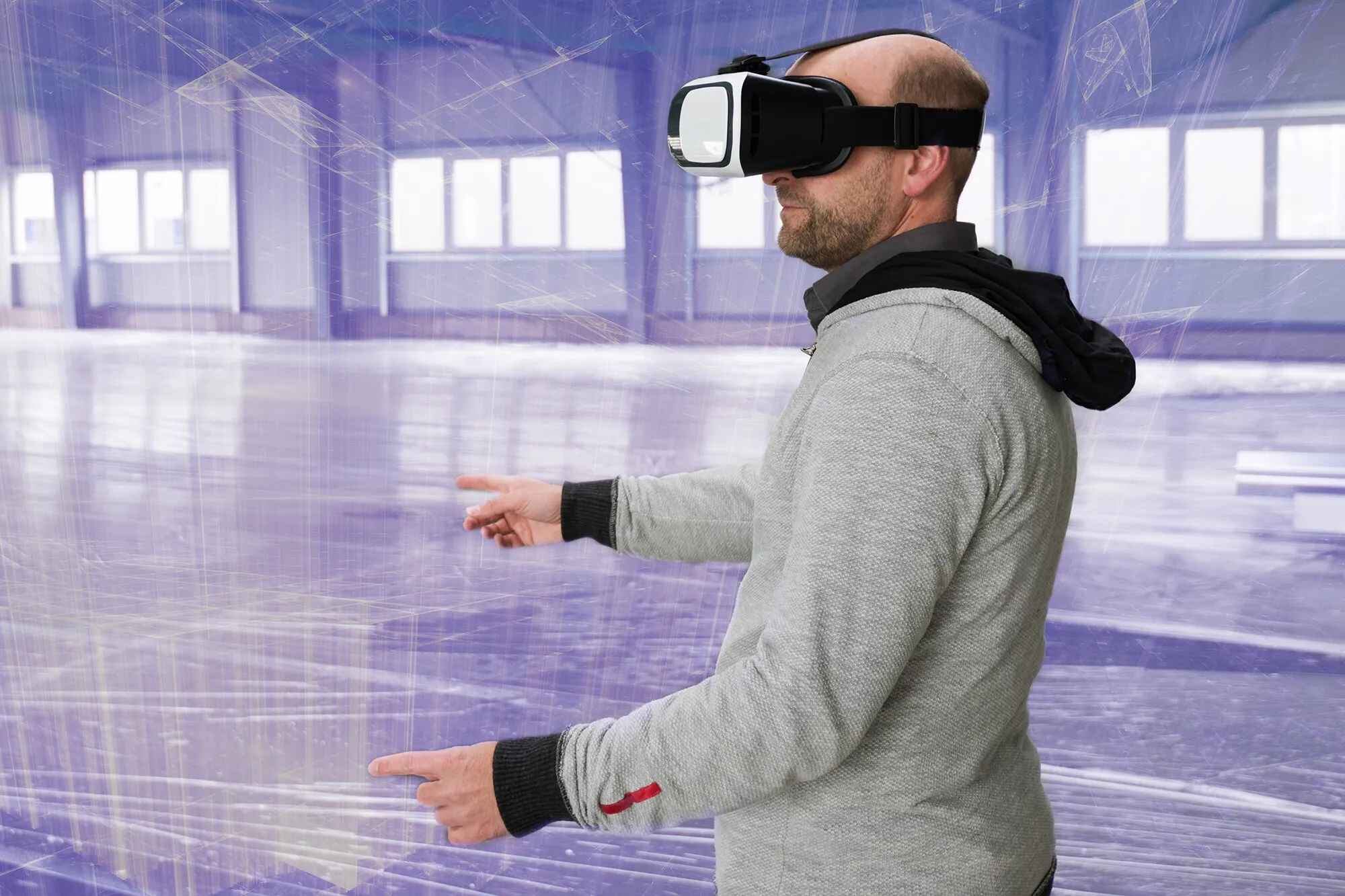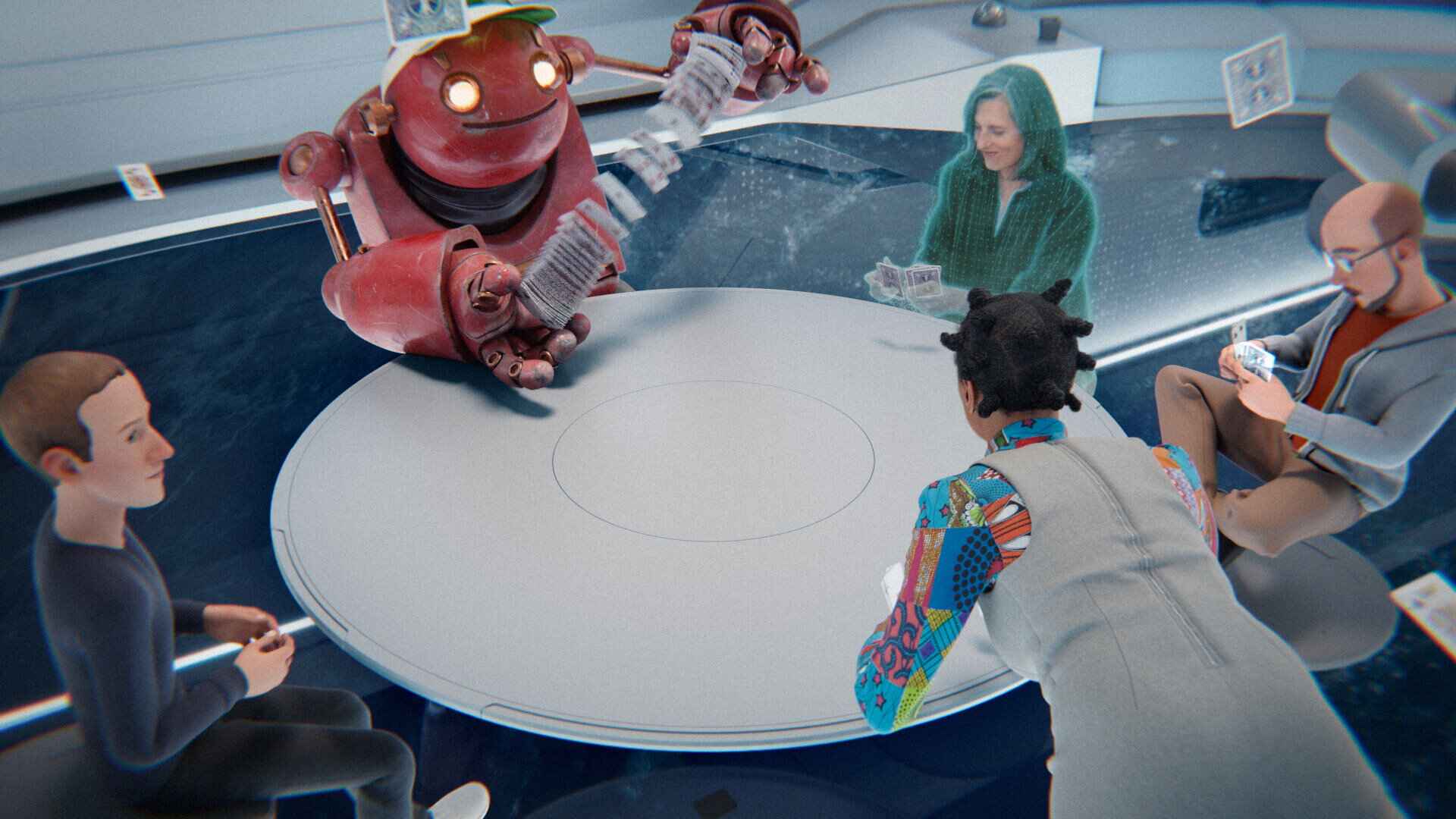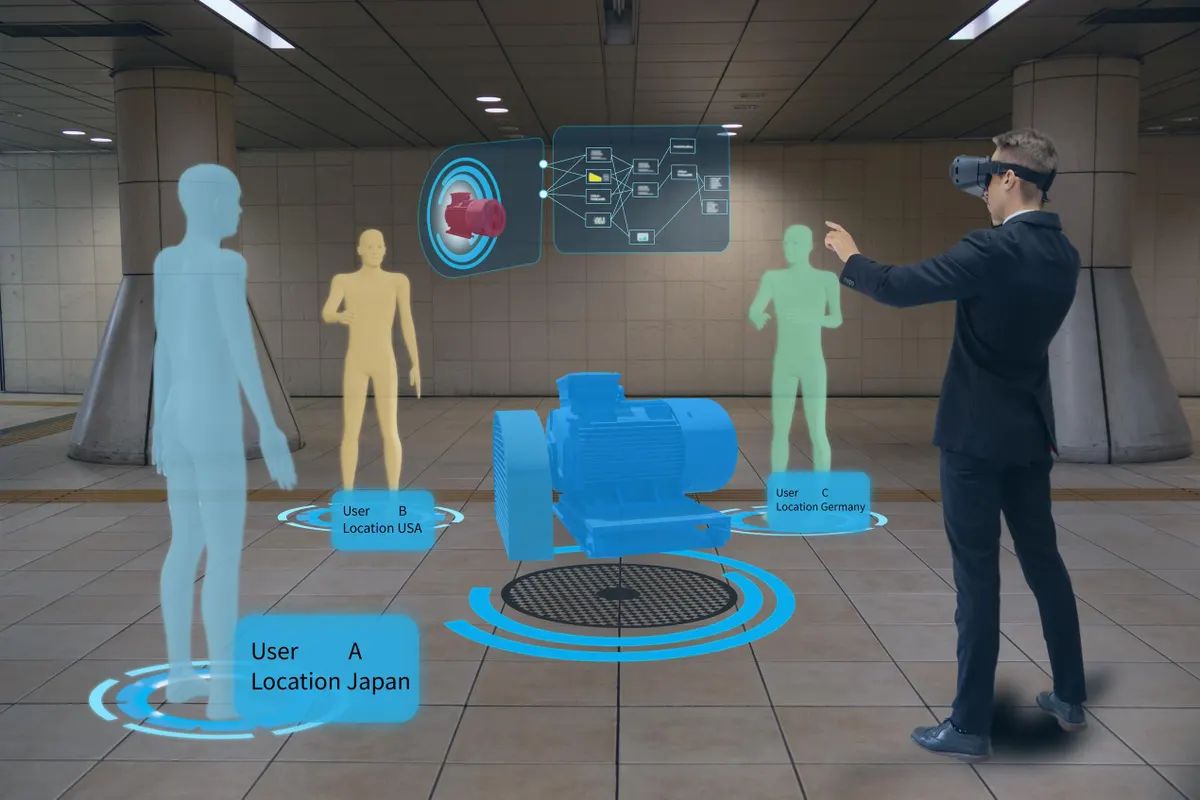Introduction
The concept of the metaverse has been gaining significant attention in recent times. With advancements in technology, the virtual world is becoming more immersive and interconnected than ever before. But what exactly is the metaverse and how is it used?
The metaverse can be defined as a virtual universe that encompasses a combination of augmented reality (AR), virtual reality (VR), and the internet. It is a digital space where users can create, interact, and engage with others in a simulated environment. Unlike traditional video games or online platforms, the metaverse is not limited to a single game or website, but rather a vast interconnected network of virtual worlds.
The potential applications of the metaverse are diverse and extend beyond gaming and entertainment. It has the power to revolutionize the way we socialize, communicate, learn, conduct business, and even receive healthcare. The metaverse blurs the boundaries between the physical and digital worlds, opening up a plethora of opportunities for individuals, businesses, and industries.
In this article, we will explore the various applications of the metaverse and delve into how it is being used in different sectors. From gaming and entertainment to education, e-commerce, and healthcare, the metaverse has the potential to reshape our lives and transform the way we interact with the digital realm.
Definition of Metaverse
The term “metaverse” was coined by Neal Stephenson in his 1992 science fiction novel, “Snow Crash.” In the book, the metaverse is portrayed as a fully immersive virtual reality world where people can interact, create, and explore. Since then, the concept of the metaverse has evolved and expanded, encompassing a broader range of virtual experiences.
The metaverse can be described as a collective virtual shared space that is created by the convergence of virtual reality, augmented reality, and the internet. It is a digital universe where users can engage in a variety of activities, from playing games and socializing to conducting business and learning.
Unlike traditional video games or online platforms, the metaverse is not confined to a single game or website. It is a network of interconnected virtual worlds where users can seamlessly venture from one experience to another. It enables real-time communication, collaboration, and interaction between users, blurring the line between the physical and digital realms.
One of the defining characteristics of the metaverse is its persistent nature. Unlike a temporary virtual experience, the metaverse exists 24/7 and continues to evolve and grow over time. It is a dynamic environment where users can create and modify their surroundings, build virtual assets, and shape the overall landscape of the digital universe.
The metaverse typically incorporates elements such as avatars, virtual currencies, and personalized spaces. Users can create an avatar that represents themselves in the digital realm, customize their appearance and abilities, and navigate through the metaverse as their virtual persona. Virtual currencies are often used within the metaverse to facilitate transactions and enable economic activities.
Overall, the metaverse is a vast and evolving concept that goes beyond mere virtual reality or online gaming. It represents a virtual universe where people can immerse themselves, connect with others, and engage in a wide range of experiences and activities.
Gaming and Entertainment
When it comes to the metaverse, gaming and entertainment are among the most prominent and widely recognized applications. The immersive nature of the metaverse provides a perfect platform for gaming enthusiasts to delve into virtual worlds and engage in interactive experiences.
In the metaverse, players can explore vast virtual landscapes, engage in thrilling adventures, and compete with others in multiplayer games. The metaverse removes the limitations of traditional gaming by offering a more immersive and interactive experience, allowing players to physically embody characters and interact with the virtual environment in a more natural way.
Virtual reality (VR) and augmented reality (AR) technologies play a crucial role in enhancing the gaming experience within the metaverse. VR headsets allow players to completely immerse themselves in a virtual environment, making gameplay feel more realistic and engaging. AR overlays virtual elements onto the real world, blending the physical and digital realms seamlessly.
Besides playing games, the metaverse also offers a wide range of entertainment options. Users can attend virtual concerts and performances by their favorite artists, immerse themselves in virtual art exhibitions, and even watch movies and shows in virtual theaters. The metaverse transforms entertainment by providing unique and interactive experiences that go beyond passive consumption.
Furthermore, the metaverse enables new possibilities for content creators and developers. It provides a platform for independent game developers, artists, musicians, and filmmakers to showcase their work and gain exposure to a wider audience. The metaverse fosters a creative community where individuals can collaborate, share ideas, and bring their visions to life.
As the metaverse continues to evolve, we can expect even more innovative gaming and entertainment experiences. With advancements in technology, such as haptic feedback and motion tracking, the metaverse has the potential to deliver even more realistic and immersive gameplay. Additionally, the interconnected nature of the metaverse allows for the integration of various media formats, creating unique cross-platform experiences.
In summary, gaming and entertainment are integral parts of the metaverse, offering immersive and interactive experiences for players and enthusiasts alike. The metaverse provides limitless opportunities for creativity, connection, and exploration within virtual worlds, transforming the way we engage with games and entertainment.
Socializing and Communication
The metaverse has revolutionized the way we socialize and communicate in the digital age, providing new avenues for connection and interaction. In a world that is increasingly becoming interconnected, the metaverse offers a virtual space where individuals can come together, regardless of geographical boundaries.
Within the metaverse, users have the opportunity to build and customize their virtual personas, known as avatars. These avatars act as representations of individuals in the digital realm and allow for a more immersive and personalized social experience. Users can meet and interact with others in real-time, engaging in conversations and forming relationships.
The metaverse provides a platform for individuals to connect with like-minded people who share similar interests and passions. Communities and social groups form within the metaverse, enabling individuals to join in discussions, collaborate on projects, and participate in virtual events. This fosters a sense of belonging and creates opportunities for networking and socializing.
Virtual reality (VR) technology enhances the social experience within the metaverse by simulating real-life interactions. Users can engage in activities like virtual gatherings and parties, where they can chat, dance, and enjoy shared experiences with friends and acquaintances. VR also allows for non-verbal communication through gestures and expressions, making conversations more dynamic and expressive.
Communication tools within the metaverse go beyond traditional text-based chat platforms. Users can engage in voice chat, enabling more natural and real-time conversations. Additionally, features like spatial audio allow users to have context-based conversations, simulating the experience of being in a physical space with others.
Businesses and brands have also embraced the metaverse as a means of communication and engagement. Virtual conferences and events provide opportunities for professionals to network, attend presentations, and showcase their products and services. The metaverse removes the limitations of physical space and enables a global audience to participate in events from anywhere in the world.
Overall, the metaverse has transformed socializing and communication by providing a virtual space where people can connect, interact, and engage. It offers a sense of community, fosters collaboration, and allows individuals to break free from the constraints of physical distance. As the metaverse continues to evolve, the social and communication aspects are likely to become even more immersive and seamless, enhancing our digital interactions.
Virtual Meetings and Conferences
The advent of the metaverse has transformed the way we conduct meetings and conferences. Gone are the days when professionals and organizations had to travel long distances to attend in-person events. With the metaverse, virtual meetings and conferences have become a convenient and immersive alternative.
Virtual meetings and conferences within the metaverse offer several advantages over traditional physical gatherings. Firstly, they eliminate geographical limitations, allowing participants from around the world to connect and collaborate. This opens up opportunities for global networking, knowledge sharing, and collaboration on a scale that was previously unimaginable.
The metaverse provides a variety of platforms and tools specifically designed for virtual meetings and conferences. These platforms offer features such as customizable virtual spaces, interactive presentations, and real-time communication tools. Participants can join virtual meeting rooms, engage in discussions, share screens, and collaborate on documents, just as they would in a physical meeting or conference.
Virtual reality (VR) technology enhances the immersive experience of virtual meetings and conferences within the metaverse. Participants can don VR headsets and enter a virtual space, where they can see and interact with other participants as avatars. This creates a more engaging and interactive environment, simulating the experience of being physically present.
Furthermore, the metaverse allows for unique and creative approaches to event design and presentation. Organizers can create customized virtual environments, complete with branding elements and interactive features. They can incorporate gamification elements to enhance engagement, such as virtual booths or scavenger hunts. Virtual conferences also offer the opportunity to record sessions and make them available for on-demand viewing, increasing accessibility and reach.
Virtual meetings and conferences in the metaverse have proven to be more time-efficient and cost-effective. Participants no longer need to spend time and money on travel, accommodations, and other expenses associated with physical events. This not only saves resources but also reduces the environmental impact of travel.
While virtual meetings and conferences within the metaverse cannot completely replace the value of face-to-face interactions, they offer an alternative that is more accessible, flexible, and scalable. As technology advances and the metaverse continues to evolve, we can expect even more innovative features and improvements in the virtual meeting and conference experience.
Education and Learning
The metaverse has opened up a world of possibilities for education and learning, transforming the way we acquire knowledge and engage in educational experiences. With its immersive and interactive nature, the metaverse offers a dynamic and engaging platform for learners of all ages.
Virtual reality (VR) and augmented reality (AR) technologies play a significant role in enhancing the educational experience within the metaverse. Students can step into virtual environments that simulate real-world scenarios, allowing for hands-on and experiential learning. For example, they can explore ancient civilizations, conduct virtual science experiments, or practice language skills in immersive simulations.
The metaverse also enables collaborative learning, allowing students and educators from different locations to come together in a virtual space. They can work on projects, engage in discussions, and share resources seamlessly. This virtual collaboration fosters a sense of inclusivity and breaks down geographical barriers, creating a global classroom.
Virtual classrooms within the metaverse offer features like real-time communication, screen sharing, and interactive whiteboards. Educators can deliver lectures, facilitate discussions, and provide personalized guidance to students, just as they would in a traditional classroom. Additionally, the metaverse allows for recordings of virtual classes, enabling students to revisit content and learn at their own pace.
Furthermore, the metaverse provides access to a vast amount of educational resources and content. Virtual libraries, museums, and galleries allow students to explore various subjects and delve deeper into their areas of interest. Educational institutions and organizations can create virtual campuses or learning hubs, where students can access courses, workshops, and lectures from renowned educators and experts.
The metaverse also offers opportunities for lifelong learning and professional development. Individuals can pursue online courses, certifications, and workshops to enhance their skills and knowledge. They can engage in virtual conferences and webinars to stay updated with the latest research and trends in their respective fields.
As the metaverse continues to evolve, we can expect even more innovative educational applications. Artificial intelligence (AI) and machine learning (ML) technologies can be integrated into the metaverse to provide personalized learning experiences, adaptive assessments, and intelligent tutoring systems.
In summary, the metaverse has the potential to revolutionize education and learning. It offers immersive and interactive experiences, global collaboration, and access to a wealth of educational resources. The metaverse is reshaping the way we acquire knowledge and engage with educational content, making learning more engaging, accessible, and inclusive.
E-commerce and Retail
The metaverse has the potential to revolutionize the way we shop and engage in e-commerce. With its immersive and interactive nature, the metaverse offers a unique platform for retailers to showcase their products, engage with customers, and provide a personalized and enhanced shopping experience.
E-commerce within the metaverse allows users to explore virtual stores and browse products in a three-dimensional environment. Users can interact with virtual representations of products, examine them from different angles, and even try them on through augmented reality (AR) technology. This immersive shopping experience provides a level of engagement and interactivity that is not possible with traditional online shopping.
The metaverse also enables social shopping, where users can explore virtual stores with friends or interact with other shoppers in real-time. Virtual reality (VR) technology enhances the social aspect of shopping, creating a sense of community and shared experiences. Users can receive recommendations, engage in discussions, and even make purchases together.
Brands and retailers can create virtual storefronts within the metaverse, complete with branding elements and customizable features. They can showcase their products in unique and creative ways, allowing for more engaging and personalized interactions. Virtual storefronts can also offer features like virtual consultations, where customers can receive personalized recommendations and advice from experts.
The metaverse can also bridge the gap between online and physical stores. Retailers can create virtual representations of their physical stores, allowing customers to explore and shop virtually. They can integrate inventory and pricing information, enabling users to make informed purchase decisions. Additionally, users can experience virtual showrooms or exhibits, where they can preview upcoming products or collections.
Virtual currencies play a significant role in e-commerce within the metaverse. Users can make purchases using virtual currencies, which can be earned through various activities within the virtual environment. This further enhances the immersion and interactivity of the shopping experience, creating a unique economy within the metaverse.
Furthermore, the metaverse provides opportunities for small businesses and independent creators. It offers a platform to showcase and sell their products to a global audience without the need for a physical store presence. The metaverse fosters a creative and entrepreneurial community, allowing individuals to monetize their skills and creations.
As the metaverse continues to evolve, we can expect even more innovative features and advancements in e-commerce and retail. Virtual reality advancements, haptic feedback, and artificial intelligence can further enhance the shopping experience within the metaverse, making it even more realistic and immersive.
In summary, the metaverse has the potential to transform e-commerce and retail, offering an immersive and personalized shopping experience. It blurs the boundaries between online and physical stores, enables social shopping, and creates opportunities for small businesses and creators. The metaverse is redefining the way we shop, making it more interactive, engaging, and accessible.
Real Estate and Architecture
The metaverse has immense potential to revolutionize the real estate and architecture industries, offering new ways to design, visualize, and experience physical spaces. With its immersive and interactive nature, the metaverse provides a virtual platform for real estate professionals, architects, and clients to collaborate, explore, and showcase their projects.
One of the key applications of the metaverse in real estate is virtual property tours. Instead of physically visiting properties, potential buyers can explore virtual representations of properties within the metaverse. They can navigate through virtual homes, offices, or retail spaces, examine details, and get a realistic sense of the space. Virtual reality (VR) technology enhances this experience by creating a more immersive and interactive environment.
The metaverse also allows architects and designers to visualize and present their projects in a virtual space. They can create 3D models of buildings and spaces, explore different design options, and showcase their vision to clients and stakeholders. Virtual reality (VR) and augmented reality (AR) technologies allow clients to experience and provide feedback on designs before construction begins. This saves time, resources, and provides a more accurate representation of the final product.
Virtual collaboration within the metaverse is another significant aspect for real estate and architecture professionals. Architects, designers, and clients can come together in a shared virtual space to discuss, review, and iterate on designs. Real-time communication tools within the metaverse facilitate seamless collaboration, regardless of geographical constraints. This enables more efficient decision-making and speeds up the design process.
The metaverse also offers opportunities for innovative architectural exploration and experimentation. Architects and designers can create virtual environments that defy the limitations of physical space, allowing them to push boundaries and explore new concepts. They can experiment with unconventional designs, materials, and spatial arrangements, providing a platform for architectural innovation.
For real estate developers, the metaverse offers a unique marketing and sales platform. They can create virtual neighborhoods or communities, showcasing properties, amenities, and lifestyle features within the metaverse. Prospective buyers can explore and engage with the virtual environment, helping them make informed decisions about their real-world investments.
As the metaverse continues to evolve, we can expect even more advancements in real estate and architecture. Integration with artificial intelligence (AI) and machine learning (ML) can enable automated processes, data analysis, and predictive modeling, enhancing the efficiency and accuracy of real estate transactions and architectural design.
In summary, the metaverse presents exciting opportunities for the real estate and architecture industries. It allows for virtual property tours, immersive visualization of designs, virtual collaboration, and innovative architectural exploration. The metaverse redefines the way we experience and interact with physical spaces, providing a platform for creativity, efficiency, and collaboration within the real estate and architecture fields.
Healthcare and Therapy
The metaverse has the potential to revolutionize the healthcare and therapy industries by providing new avenues for remote care, immersive therapies, and educational resources. With its interactive and immersive nature, the metaverse offers a platform to enhance the delivery of healthcare services and therapeutic interventions.
One of the key applications of the metaverse in healthcare is telemedicine and remote care. Doctors and healthcare professionals can connect with patients virtually, allowing for real-time consultations, diagnosis, and treatment. Virtual reality (VR) technology enables immersive telemedicine experiences, where patients can have virtual examinations, receive therapy, or participate in remote surgeries with the assistance of healthcare professionals.
The metaverse also offers opportunities for immersive therapies and rehabilitation. Virtual reality (VR) simulations can be used to create controlled environments that help patients overcome fears, manage stress, or practice important skills. This immersive approach to therapy can be particularly beneficial for patients with phobias, post-traumatic stress disorder (PTSD), or physical disabilities.
Education and training are essential aspects of the healthcare industry, and the metaverse can significantly enhance these areas. Medical students and healthcare professionals can access virtual learning environments within the metaverse. These environments simulate patient scenarios, allowing users to practice clinical skills, enhance diagnostic abilities, and learn from experienced mentors.
The metaverse also provides a platform for healthcare professionals to collaborate and share knowledge globally. Virtual conferences and seminars enable professionals to connect and exchange expertise, regardless of geographical boundaries. Researchers can present their findings, discuss emerging trends, and engage in interdisciplinary collaborations within the metaverse.
Moreover, the metaverse has the potential to improve accessibility to healthcare and therapy services. Individuals in remote areas or with limited access to healthcare facilities can benefit from virtual consultations and remote care within the metaverse. This reduces barriers to receiving timely care and allows individuals to access specialized healthcare services that may not be readily available in their local area.
As the metaverse continues to evolve, we can expect even more innovative applications in healthcare and therapy. Advancements in haptic feedback, artificial intelligence (AI), and machine learning (ML) can further enhance the immersive healthcare experience within the metaverse, enabling more accurate diagnostics, personalized treatment plans, and intelligent monitoring systems.
In summary, the metaverse holds great potential for the healthcare and therapy industries, offering opportunities for remote care, immersive therapies, education, and global collaboration. The metaverse has the power to improve accessibility, enhance the effectiveness of treatments, and transform the way healthcare services are delivered and experienced.
Art and Creativity
The metaverse has become a vibrant and dynamic space for artists and creators to express their creativity and showcase their work. With its immersive and interactive nature, the metaverse offers new possibilities for artistic exploration, collaboration, and engagement.
Artists can use the metaverse as a canvas for their creations, pushing the boundaries of traditional art forms. They can create immersive virtual art installations, digital sculptures, and interactive experiences that go beyond the limitations of physical space. The metaverse allows artists to experiment with new mediums, incorporate virtual reality (VR) and augmented reality (AR) technologies, and engage with audiences in unique and interactive ways.
The metaverse also provides opportunities for collaborative art projects. Artists can come together in virtual spaces to collaborate on virtual exhibits, immersive performances, or even create virtual galleries. The metaverse enables global collaboration, breaking down geographical barriers and facilitating the exchange of ideas and skills among artists from different backgrounds and cultures.
Virtual reality (VR) technology enhances the artistic experience within the metaverse. Users can don VR headsets and immerse themselves in virtual art galleries, where they can explore virtual artworks, interact with them, and even visit exhibitions from renowned artists around the world. VR allows for a more immersive and engaging experience, adding a new layer of depth to artistic expression.
Furthermore, the metaverse provides opportunities for artists to monetize their work and connect with a global audience. They can sell their digital creations as non-fungible tokens (NFTs) within the metaverse, allowing collectors to own unique and verifiable pieces of digital art. The metaverse also serves as a platform for artists to showcase their work, gain exposure, and connect with art enthusiasts, galleries, and buyers.
The metaverse has also transformed the way we experience traditional art forms, such as music and theater. Virtual concerts and performances within the metaverse offer unique and immersive experiences for audiences, allowing them to engage with music and performances in a whole new way. Virtual reality (VR) and augmented reality (AR) technologies enable audiences to have front-row seats, interact with virtual performers, and even participate in the artistic experience.
As the metaverse continues to evolve, we can expect even more innovative applications in art and creativity. Advancements in technology, such as haptic feedback and realistic 3D rendering, can further enhance the immersive artistic experience within the metaverse, allowing for more sensory and interactive art forms.
In summary, the metaverse has become a thriving hub for artists and creators, providing new possibilities for artistic expression, collaboration, and monetization. The immersive and interactive nature of the metaverse transforms the way we create, experience, and engage with art, opening up a world of opportunities for artists and art enthusiasts alike.
Conclusion
The metaverse holds immense potential to reshape various aspects of our lives and industries. From gaming and entertainment to socializing, education, e-commerce, real estate, healthcare, and art, the metaverse is transforming the way we interact with the digital realm.
The metaverse offers immersive and interactive experiences that go beyond traditional online platforms or video games. It blurs the boundaries between the physical and digital worlds, creating a dynamic and interconnected virtual universe that opens up new possibilities for creativity, collaboration, and exploration.
In gaming and entertainment, the metaverse provides an immersive platform for gamers and enthusiasts to engage in interactive experiences, attend virtual concerts, and explore virtual worlds. It offers new avenues for content creators and independent artists to showcase their work and gain exposure to a wider audience.
Socializing and communication within the metaverse transcend geographical limitations, enabling individuals to connect, collaborate, and form communities in a virtual space. It fosters a sense of belonging and creates opportunities for global networking and collaboration.
The metaverse revolutionizes education and learning by providing immersive and interactive experiences, global collaboration, and access to a wealth of educational resources. It enhances the way students learn, educators teach, and professionals access lifelong learning opportunities.
E-commerce and retail within the metaverse offer unique and enhanced shopping experiences, allowing users to explore virtual stores, try on products, and engage in social shopping. It opens up global marketplaces and provides opportunities for small businesses and creators to thrive.
In real estate and architecture, the metaverse provides virtual property tours, immersive visualization of designs, and collaborative environments for professionals and clients. It transforms the way we experience, design, and showcase physical spaces.
The metaverse has the potential to revolutionize healthcare and therapy by enabling remote care, immersive therapies, and global collaboration among healthcare professionals. It enhances accessibility to healthcare services and provides new avenues for research and education.
Lastly, the metaverse offers a vibrant platform for artists and creators to express their creativity, collaborate, and engage with audiences. It redefines the way we experience and interact with art forms, offering immersive and interactive experiences.
In conclusion, the metaverse represents a new frontier of digital and virtual experiences that transcends traditional boundaries. As technology advances and the metaverse continues to evolve, we can expect even more innovative applications and transformations in our daily lives and industries, shaping the future of how we connect, create, and experience the digital realm.







